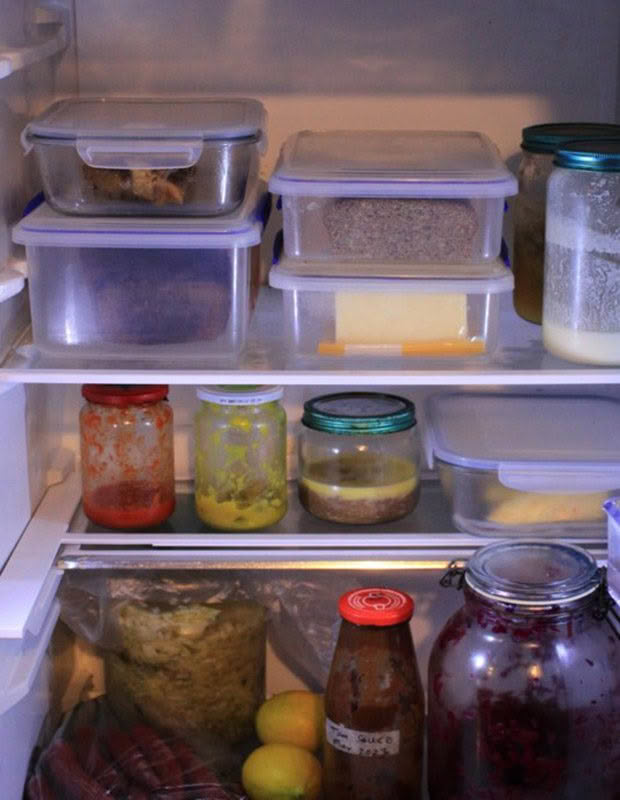Rebecca Stewart: The beautiful simplicity in a bare fridge

Rebecca Stewart reflects on how the need to have a full fridge falls away when growing to eat.
Words: Rebecca Stewart Images: Summer Stewart
The first frosts have come and gone, leaving tender plants collapsed in their wake. The choko plant hangs as a molten mess from the fences and the nasturtiums’ sunny blooms are now mushy mulch in the rambling garden.
Outside, our breath clouds in front of our faces as we feed out the hay to our cattle and sheep, crisp air stinging our cheeks, nose and lips. Woolly gloves fail to keep the numbing cold at bay as we feed the pigs and chooks their morning rations. At least our heritage chooks have gifted us with fresh eggs after a hiatus of several months. It is these simple things which bring us joy and sustain us through the darkness of winter.

On these mornings, it is warmer in the fridge than in our old bungalow until the fire is lit, its flickering glow heating the surrounding air. I shared this thought with our Facebook group ‘Homesteading New Zealand’ with a photo of our opened fridge and someone said: “Feed the fridge, it’s starving”. It was a harmless wisecrack, but it got me thinking.
People are spoilt for choice these days with supermarkets and other stores filled to the brim with all sorts of foods. Many of these foods are loaded with preservatives, flavour-enhancers, added colours and the curse of our world – sugar! How some of these additives are made and what their possible side effects are is enough to put you off these foods for good. But the modern fridge and pantries are often overflowing with these foods, many of them lacking in nutrition too.
When your aim is to eat for health and to grow much of what you eat, you find the need to store a fridge full of food falls away. The thing about eating healthy and mostly natural homegrown food is that you get more nutrition from what you eat. This means you eat less. An interesting concept but one we live by. Living a self-sufficient life is a tremendous goal and there are often not enough hours in your day to make all that your life requires. When you simplify your diet, you don’t have to make as much and lessen your workload.
We have a few different sauces and pickles, which add variety throughout the year. Our Keto bread, which I make a couple of times a week, and a large jar of sauerkraut will last a couple of weeks. I have finally found a bacon recipe which I love, so beef bacon is a favourite lunch meat. There is a homemade cheese curing from the last of our milk before we dried the cow off, but we are back to buying cheese, butter and cream for now. Often leftovers from dinner are in the fridge for lunch the next day, or a lamb or beef roast for cold meat.

There are some lemons we have had to buy as our little trees can’t keep up and friends’ massive tree down the road is not ready yet. Chillies harvested from our plants and some from another friend, waiting to be made into chilli sauce. Natural hog casings, stored salted, are to be made into sausages. Then there is our daughter’s homemade kefir and a bit of offal for the cats. Plus, some bought curry paste (still working on growing the ingredients for a home-grown version), stevia drops, rennet and coconut milk. There is a jar of marmalade, gifted to us by a lovely lady which we didn’t have the heart to turn down, it is saved for guests to eat.
That’s pretty much it. Nothing else needs to be stored in the fridge right now. I look in our fridge and feel a sense of accomplishment. We have removed the crap food from our life and much of what is in there is homegrown or homemade. Of the food that is bought, I know we have the skills and developing infrastructure to eventually make the most of it ourselves – except for the coconut milk!

Our meat is homegrown and a primary part of our diet topped up with a small amount of bought chicken for our chicken-loving daughter. The garden, even in its winter state, provides perennial leeks, root crops and leafy greens should we need them, and they are harvested fresh. This is part of the journey: grow and produce what you can, buy what you need and appreciate the food that you have.
I saw a quote once from a very old beautiful lady when asked her secret to a long and healthy life: “Eat to live, don’t live to eat.” Wise words from an old soul. This does not mean we don’t have delicious food, its more that we consciously choose to eat food which is better for us. But living simply also reminds us that it is not just food which sustains us. It is the air we breathe, the water we drink and immerse ourselves in, the smells which surround us, the land with which we connect and the people we love.
Read more from Rebecca Stewart in her new book Life on Fodder Farm, due for release Thursday 10th August.

